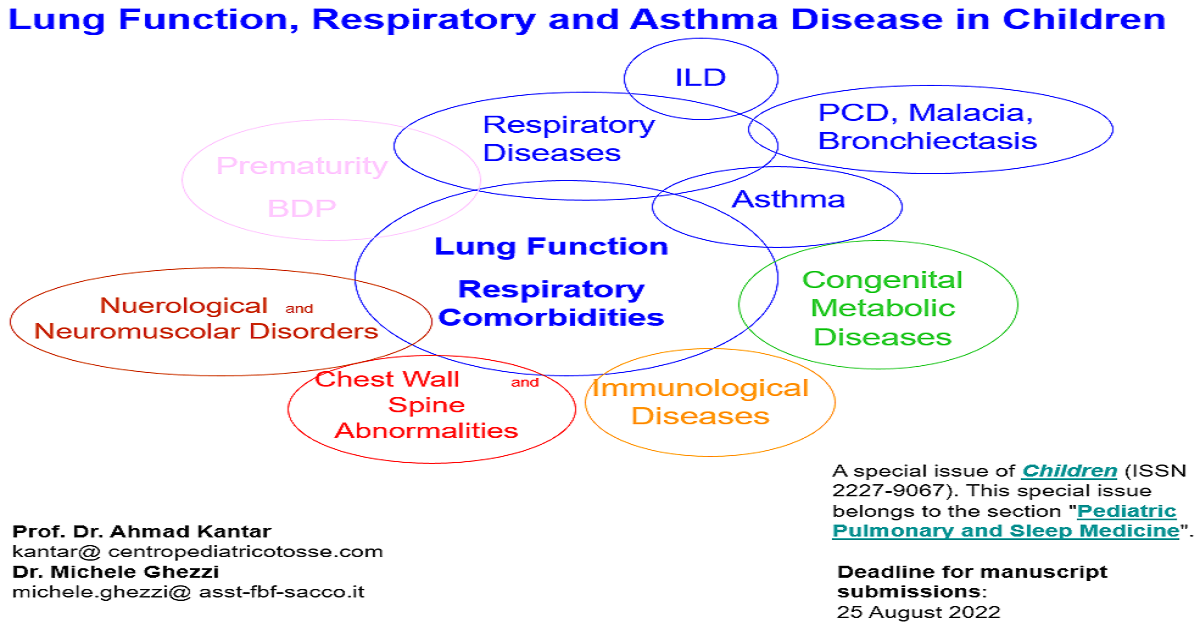Lung Function, Respiratory and Asthma Disease in Children
A special issue of Children (ISSN 2227-9067). This special issue belongs to the section "Pediatric Pulmonary and Sleep Medicine".
Deadline for manuscript submissions: closed (15 December 2022) | Viewed by 22053

Special Issue Editors
Interests: cough; pediatric asthma; bronchitis; bronchiectasis; fespiratory and food allergy
Special Issues, Collections and Topics in MDPI journals
Interests: asthma; bronchoscopy; bronchiectasis; cough; tracheomalacia
Special Issues, Collections and Topics in MDPI journals
Special Issue Information
Dear Colleagues,
It is a pleasure to invite you to contribute to this Special Issue dedicated to respiratory diseases; in particular, asthma and lung function in children.
The exponential increase in the prevalence of asthma and severe asthma in children is one of the reasons for which clinical activity and research studies are currently focusing on respiratory diseases and the monitoring of respiratory function in children.
The most recent challenge is SARS-CoV-2 infection and the monitoring of possible long-term consequences in children.
In this Special Issue, we aim to collect valuable updates on these topics from various experts.
Prof. Dr. Ahmad Kantar
Dr. Michele Ghezzi
Guest Editors
Manuscript Submission Information
Manuscripts should be submitted online at www.mdpi.com by registering and logging in to this website. Once you are registered, click here to go to the submission form. Manuscripts can be submitted until the deadline. All submissions that pass pre-check are peer-reviewed. Accepted papers will be published continuously in the journal (as soon as accepted) and will be listed together on the special issue website. Research articles, review articles as well as short communications are invited. For planned papers, a title and short abstract (about 100 words) can be sent to the Editorial Office for announcement on this website.
Submitted manuscripts should not have been published previously, nor be under consideration for publication elsewhere (except conference proceedings papers). All manuscripts are thoroughly refereed through a single-blind peer-review process. A guide for authors and other relevant information for submission of manuscripts is available on the Instructions for Authors page. Children is an international peer-reviewed open access monthly journal published by MDPI.
Please visit the Instructions for Authors page before submitting a manuscript. The Article Processing Charge (APC) for publication in this open access journal is 2400 CHF (Swiss Francs). Submitted papers should be well formatted and use good English. Authors may use MDPI's English editing service prior to publication or during author revisions.
Keywords
- children
- asthma
- lung function
- COVID-19
- respiratory comorbidities







